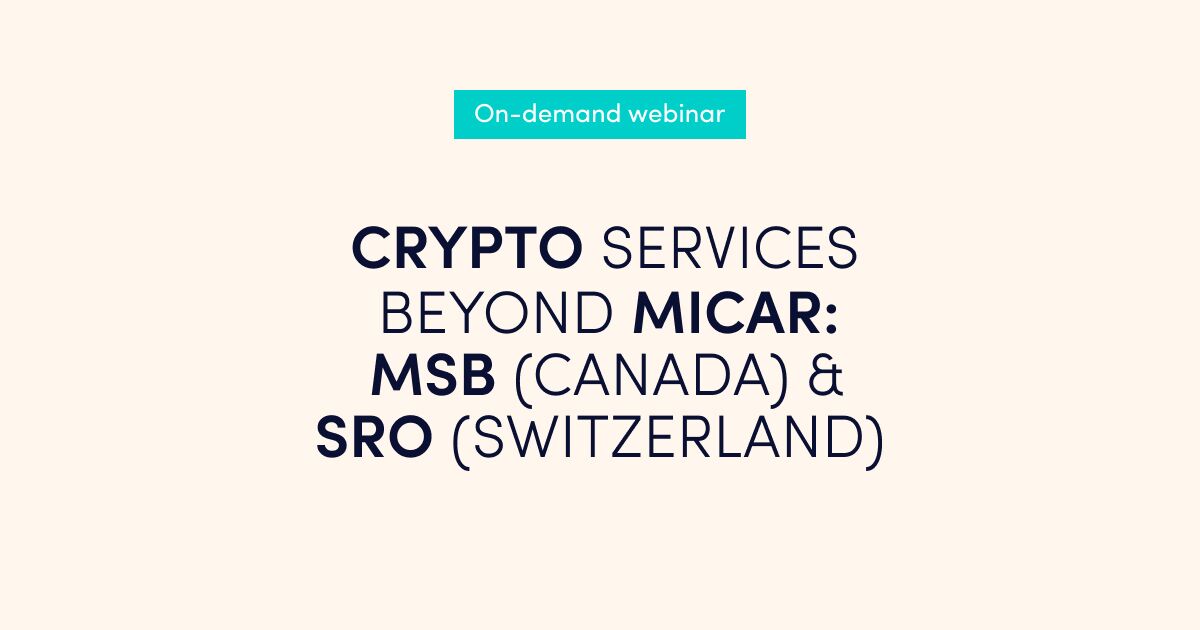In the tightly regulated fintech industry, companies need robust core banking or payment software to ensure compliance with regulatory standards. This article will explore eight key reasons why the core banking system is crucial for fintech company regulatory compliance. The discussion will encompass vital factors for fintech firms when selecting their core banking software, starting with features to streamline reporting processes and concluding with elements essential for meeting regulatory obligations.
Built-in regulatory reporting
When selecting core banking software for a fintech firm, a critical consideration is its support for regulatory reporting functionality. Timely and accurate reports are essential for meeting regulatory demands, making it imperative for fintechs to choose a software solution capable of efficiently generating necessary reports. This ensures financial institutions can promptly adapt to evolving regulations, submit required reports effortlessly, and mitigate non-compliance risks. Additionally, it enhances operational efficiency by eliminating the need for manual report creation.
Moreover, a well-designed core banking software should centre on general ledger transactions, supporting a full chart of accounts and intra-company accounting. These capabilities are essential for efficiently generating management accounts, financial statements, ongoing capital adequacy calculations, safeguarding account reconciliations, and more. Choosing a core system that acts as comprehensive bank compliance software allows PSPs to centralise all accounting functions within a single platform. This streamlines reporting processes and ensures the prompt and accurate generation of reports.
Regular system updates
Regular system updates are imperative for maintaining a resilient and secure financial infrastructure in core banking software. Integrating the latest security features and protocols through consistent updates is a proactive defence against evolving cyber threats. Since the financial industry is a prime target for malicious actors, avoiding potential vulnerabilities is non-negotiable. These updates enable the enhancement of encryption standards, the reinforcement of authentication protocols, and the timely patching any identified security loopholes. Prioritising the integration of cutting-edge security measures ensures the confidentiality and integrity of sensitive financial data. A commitment to regular updates is not just a technological necessity but a strategic imperative for safeguarding clients’ and institutions’ trust and financial well-being.
Ability to create different customer risk groups with specific rules for each
The ability of core banking software to establish distinct customer risk groups with tailored rules for each is paramount in navigating the intricacies of financial risk management. This functionality empowers financial institutions to segregate low-risk clients from their high-risk counterparts, enabling a nuanced approach to risk mitigation. For high-risk clients, the software must facilitate the implementation of specific rules, such as imposing transaction limits or mandating additional payment verification steps. This tailored risk management approach ensures a more precise assessment of potential threats. It allows financial institutions to apply targeted measures aligned with the unique risk profiles of their clientele.
Essentially, the flexibility to create diverse customer risk groups with specific rules within core banking software serves as a strategic tool for enhancing security, compliance, and overall risk resilience in the dynamic landscape of financial services.
Ability to create specific workflow depending on the customer group, payment amount or any other parameters
Additionally, the significance of core banking functionality lies in its capacity to establish diverse workflows tailored to distinct customer categories, providing a dynamic framework for regularly reviewing compliance processes. This flexibility is instrumental in adapting to the varying risk profiles inherent in the financial landscape. For instance, low-risk clients can seamlessly initiate payments without necessitating explicit acceptance from the fintech company’s AML, streamlining the process for routine transactions. Conversely, high-risk clients may undergo a rigorous acceptance procedure, ensuring meticulous scrutiny in line with compliance standards.
Moreover, adjusting workflows based on payment amounts adds more precision to the system. Payments below a specified threshold, say 1000 EUR, may proceed without additional acceptance requirements, while transactions exceeding this limit trigger an AML team review. This nuanced approach enhances operational efficiency and fortifies compliance mechanisms, aligning the workflow intricacies with the unique risk characteristics associated with different customer categories and payment magnitudes.
User access rights management
In fintech regulatory compliance, the intricacies of user rights design in core banking software are crucial. Upholding data protection regulations, safeguarding sensitive payment data, and establishing effective governance is critical for compliance. Mitigating insider threats is also vital.
In high-secure core banking solutions, a user with specific credentials must not execute multiple crucial actions without sufficient oversight. This includes customer onboarding, processing payment transactions, transaction approvals, and addressing red flag alerts from the Anti-Money Laundering (AML) system. Lapses in governance and control pose significant compliance risks.
The absence of the “four eyes” principle, where actions require review and approval from multiple authorised users (employees of financial institutions), jeopardises regulatory compliance and increases susceptibility to fraudulent activities.
Core banking software must prioritise proper governance and control through robust user rights management. This involves implementing role-based access controls to ensure users have appropriate permissions aligned with their responsibilities. This feature also enforces the segregation of duties, mitigating the risk of unauthorised activities and strengthening compliance.
Additionally, adopting multi-step approval workflows is crucial, ensuring critical actions, such as those related to customer funds, undergo scrutiny and approval from multiple authorised users. This principle enhances accountability and reduces the potential for insider threats.
Beyond regulatory compliance, user rights management facilitates traceability, simplifying the identification of individuals responsible for specific actions within the system. This aids in audits and investigations.
Integrations with AML/KYC/KYB service providers
Fintech firms must prioritise comprehensive compliance with KYC/KYB and AML laws to navigate challenging regulatory landscapes effectively.
Ensuring robust AML/KYC/KYB functionality within core banking software is paramount in today’s financial landscape. AML/KYC provider services achieve the highest level of security. Core banking software should have ready integrations with these providers or allow new integrations with preferred providers.
Integrating with AML/KYC/KYB providers enables fintech companies to effortlessly access essential identification and compliance data, eliminating the need to screen clients through multiple portals and blacklists. This streamlined approach ensures real-time access to updated reports directly within the core banking software back-office interface.
Meticulous analyses of each customer, leveraging information and documentation obtained in the KYC/KYB process, can be used to establish comprehensive risk profiles. This, in turn, enables continuous monitoring of customer activities, proactively identifying and mitigating potential risks.
These AML/KYC/KYB services provide:
- Customer Identification: This foundational step requires a comprehensive understanding of a client’s financial history.
- Continuous Customer Monitoring: Ensuring that the KYC/KYB process is ongoing, actively scanning customers for potential risks and suspicious activities based on their risk profiles.
- Customer Due Diligence: Delving deeper into clients’ financial dealings, especially those with higher risk profiles.
- Transaction Monitoring: AML solutions enable fintech companies to automate the scanning of daily financial transactions, proactively preventing money laundering, fraud, and terrorist financing.
In addition, incorporating biometric authentication during onboarding, including facial recognition, empowers fintechs to elevate the levels of security and convenience associated with user identification.
Ensure that customer data is stored in compliance with GDPR and PSD3
Fintechs encounter the challenge of complying with intricate regulations like the General Data Protection Regulation (GDPR) and Payment Services Directive 3 (PSD3), and their core banking systems must address these specific requirements.
Effectively navigating this dynamic regulatory landscape requires adept management of their core banking systems, ensuring they are consistently updated with the latest security features and protocols. To meet government regulations successfully, core banking software providers must prioritise tasks such as implementing cutting-edge security features. This allows fintechs to regularly review compliance processes, incorporate advanced security solutions for data protection and fraud prevention, and store customer data in accordance with GDPR and PSD3 guidelines.
BCP (Business continuity plan) – to ensure required support service
Business Continuity Planning (BCP) is a proactive initiative designed to anticipate potential threats, vulnerabilities, and weaknesses, enhancing a bank’s resilience during crises. Its primary goal is to minimise losses and ensure the continuity of business operations in the face of disruptions.
Adherence to these regulatory standards underscores a fintech firm’s commitment to sustaining operations, customer service, and financial asset protection during disasters. In addition to employee training, ensuring they are well informed about their roles and responsibilities during disruptions, and continuous risk assessment and management, core banking software must support BCP.
Given the paramount importance of IT systems in today’s digital age, technical recovery solutions focus on restoring IT infrastructure and core banking systems during disruptions. This ensures the continuity of critical functions and contributes to overall business recovery. Core banking software must incorporate robust technical recovery solutions that restore core systems and data. It should also provide tools for monitoring and managing IT infrastructure to ensure resilience and preparedness.
To explore our solution further and witness how our core banking software aligns with regulatory standards, contact us to schedule a demo.
Core banking Macrobank by Advapay: Empowering Continuous Evolution
Macrobank, an innovative Core Banking Platform, enhances efficiency across multiple areas. Tailored to address current and future challenges in financial institutions, it represents cutting-edge solutions.
At stake:
- Robust Back Office Functionality
- Ready Integrations for Seamless Implementation
- White-Label Web and Mobile Banking Apps
- BaaS and Embedded Finance Capabilities
- Modern Back-Office Application Interface
- Startup-Friendly Design
- Compliance with the Security and Regulatory Standards
- Built-In Accounting System
- Diverse Deployment and Purchase Options
Our solution offers access to various functionalities, technology, and partner ecosystems that prioritise security and compliance. Macrobank empowers you to design personalised offerings within your chosen ecosystems, facilitating efficient product launches.








